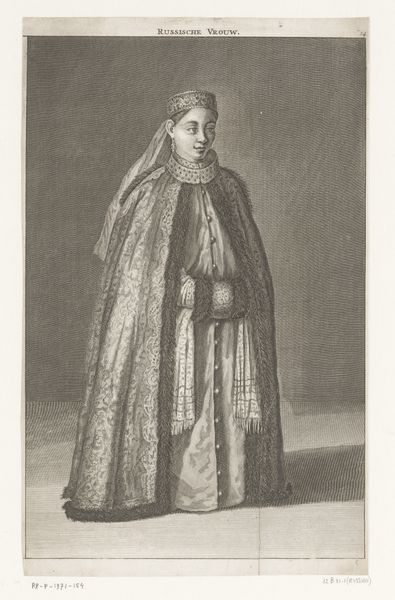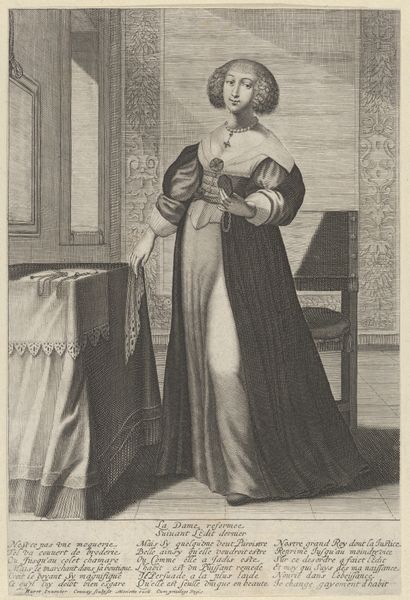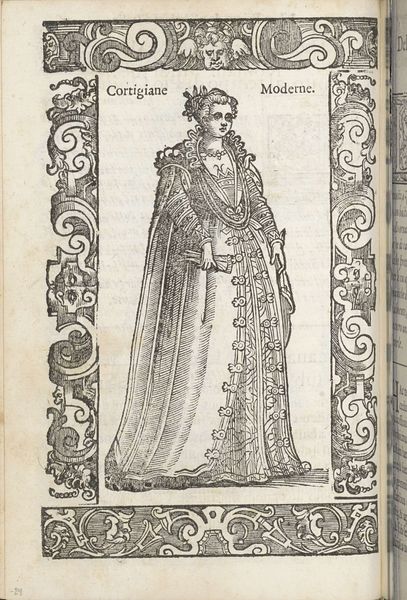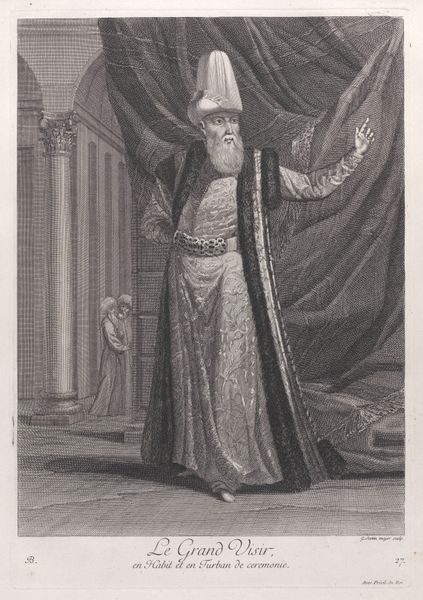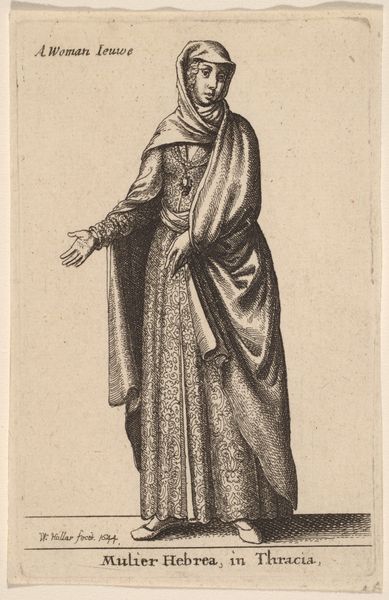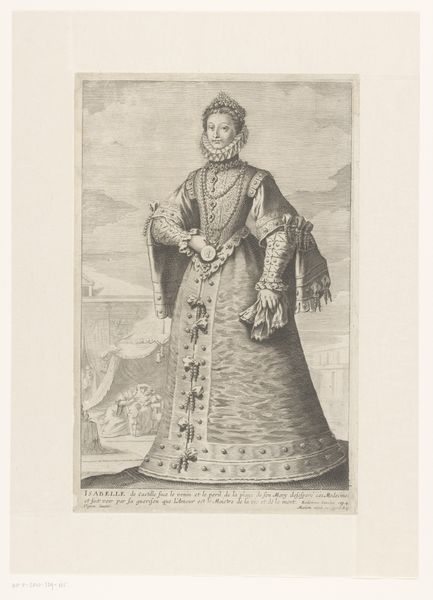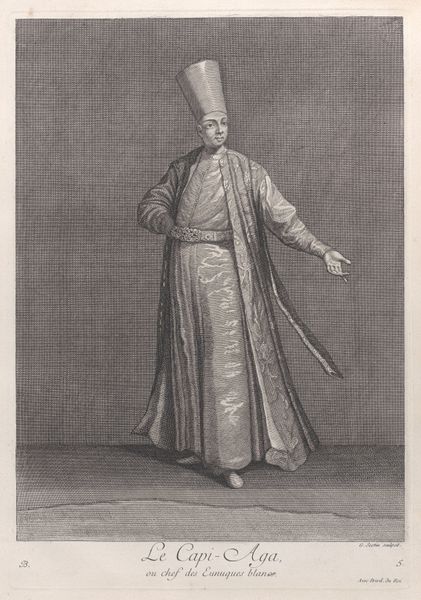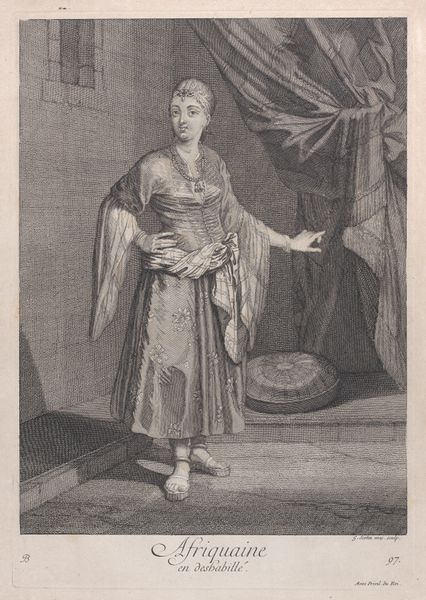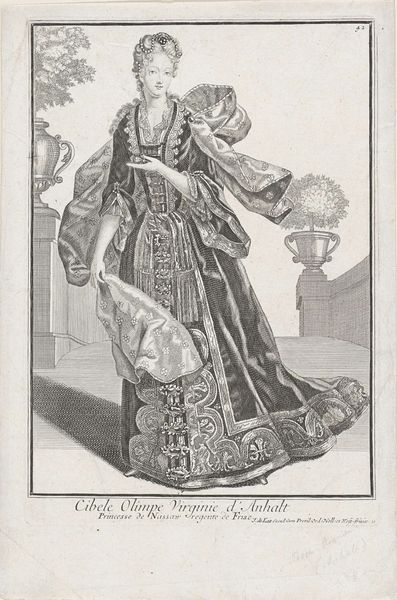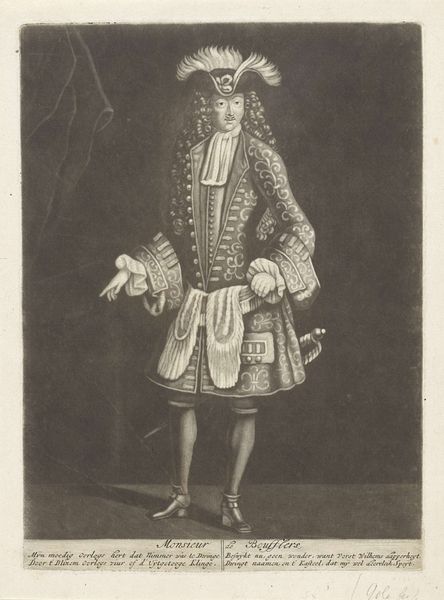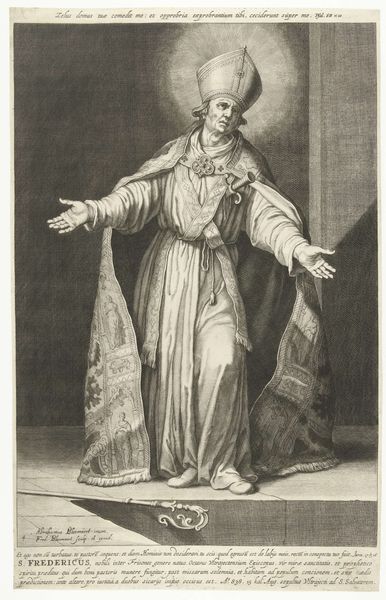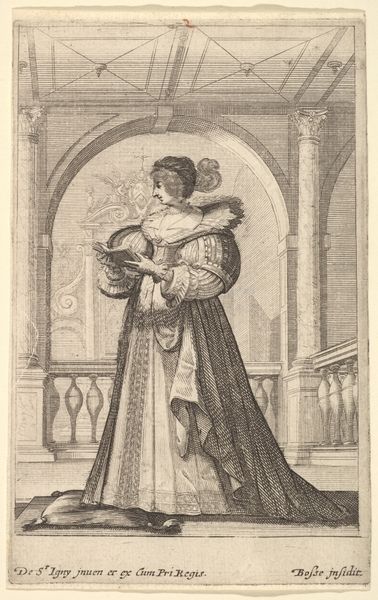
Hongroise, plate 77 from "Recueil de cent estampes représentent differentes nations du Levant" 1714 - 1715
0:00
0:00
drawing, print, engraving
#
portrait
#
drawing
#
baroque
# print
#
genre-painting
#
engraving
Dimensions: Sheet: 16 1/2 × 12 1/16 in. (41.9 × 30.6 cm) Plate: 14 × 9 13/16 in. (35.5 × 24.9 cm)
Copyright: Public Domain
Jean Baptiste Vanmour made this print, “Hongroise,” likely in the early 1700s, as part of a series documenting different nations of the Levant. It’s created from an engraved plate, a skilled process involving carefully incising lines into a metal surface, inking it, and then pressing it onto paper. The material of the print – thin paper, covered in fine lines of ink – is itself interesting. In its time, it was a relatively efficient way to disseminate images of foreign cultures, allowing people back in Europe a glimpse of other places and customs. The crisp detail of the engraving allows us to appreciate the textures and patterns of the woman’s clothing, from the fur trim of her cloak to the intricate embroidery on her dress. Consider the labor involved in the production of this image. From the artist's initial drawing to the engraver's meticulous work, the print embodies a whole network of production and consumption. Appreciating the materiality and making of this print helps us understand its significance as a cultural artifact, beyond just a representation of a woman in Hungarian dress.
Comments
No comments
Be the first to comment and join the conversation on the ultimate creative platform.
